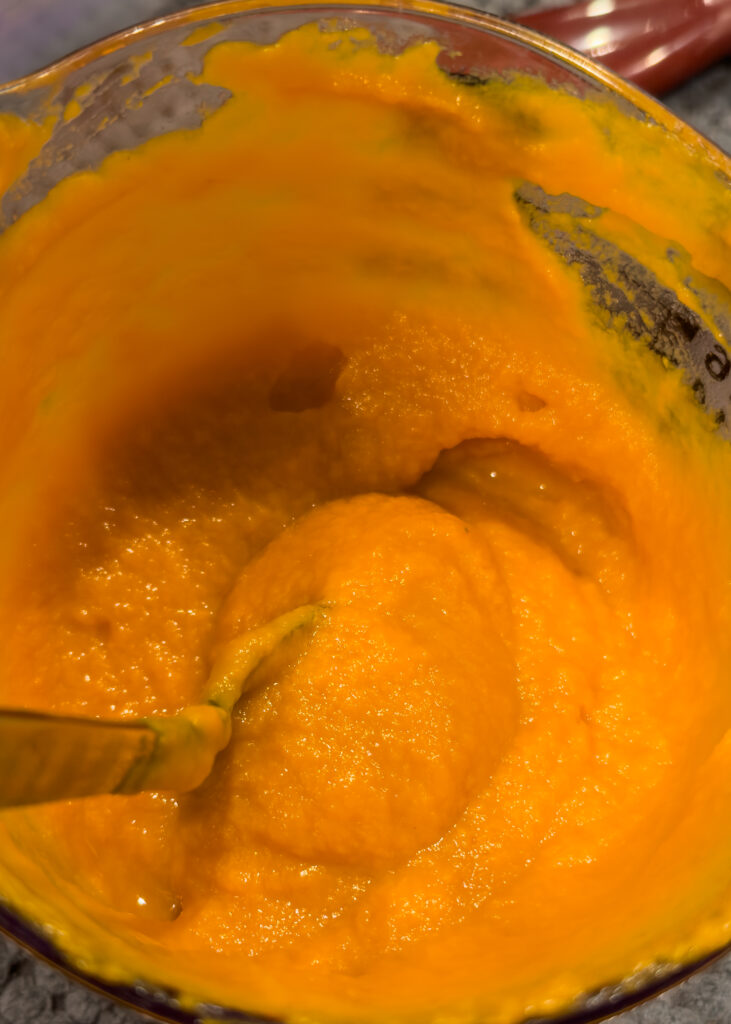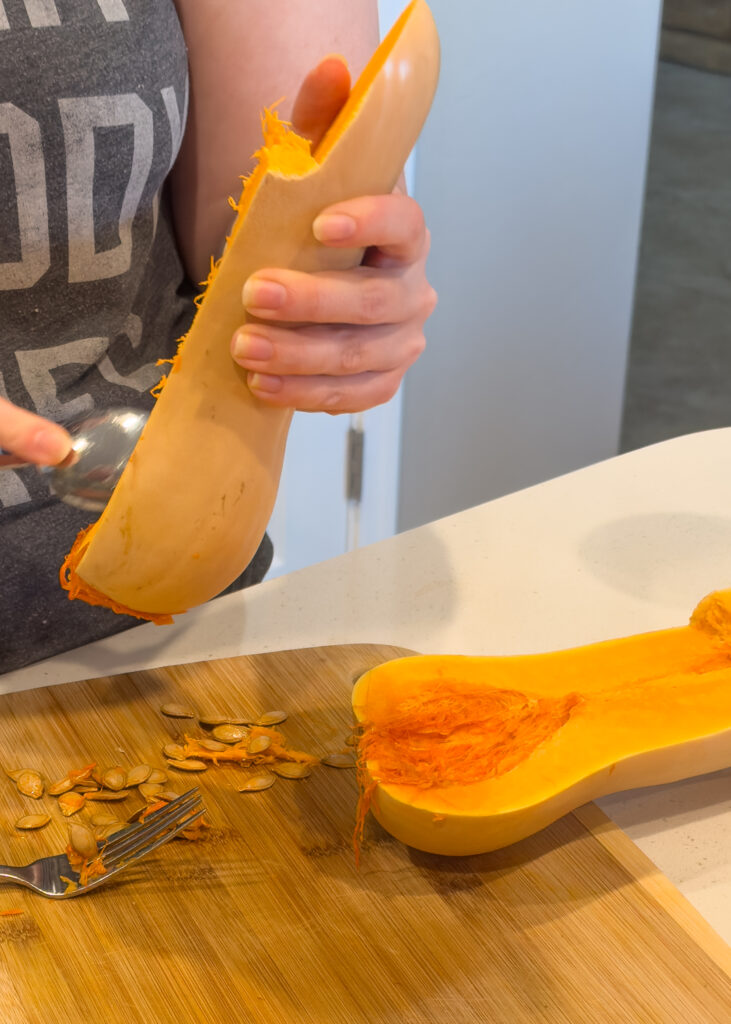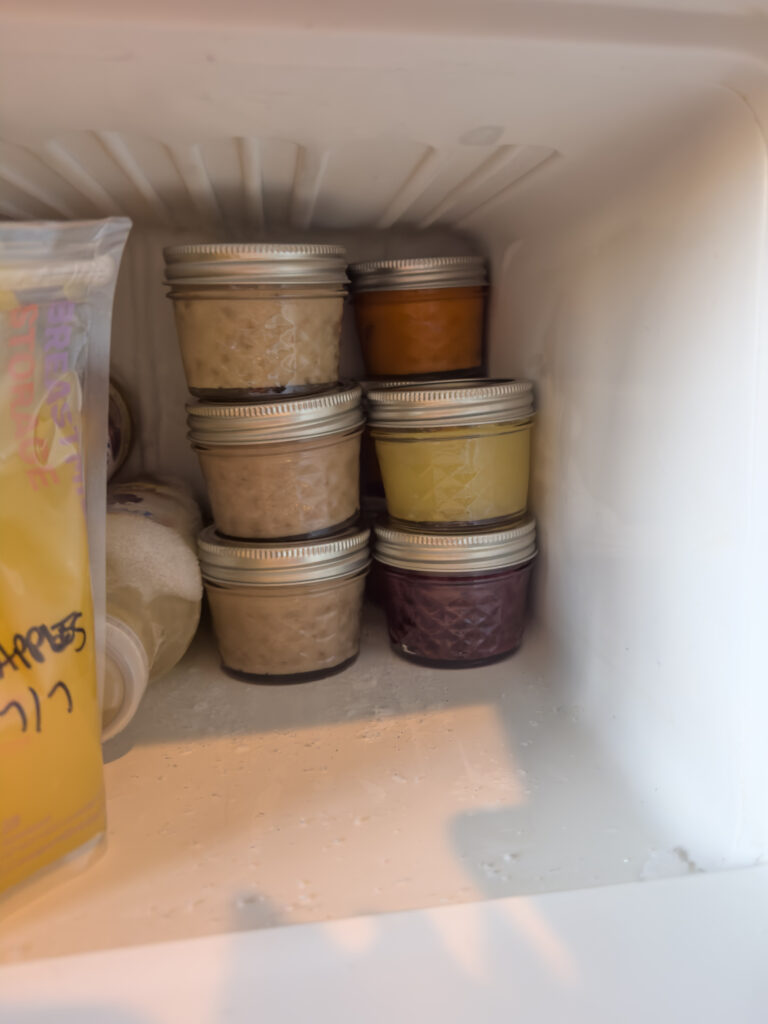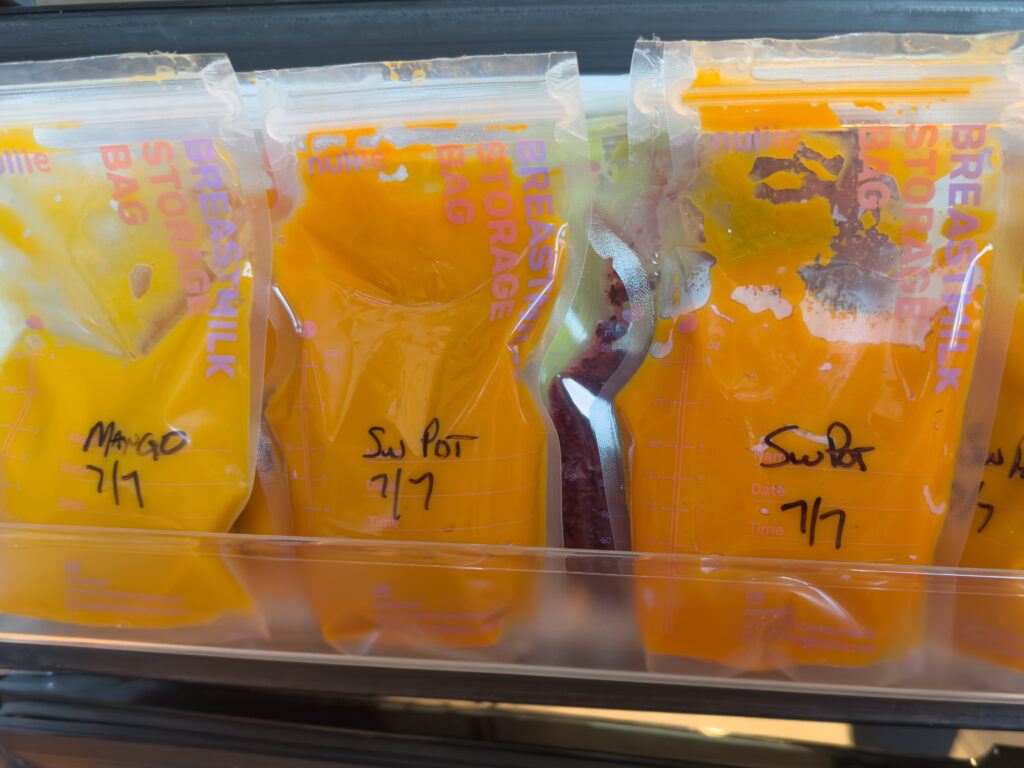Welcoming a grandbaby into the world is a joyous occasion, and one of the most meaningful ways to express love is by creating homemade baby food. In this blog, we’ll explore the importance of introducing nutrient-rich, homemade baby food options and dive into the various benefits this act of culinary care can bring to both baby and family.
Benefits of Homemade Baby Food
Nutritional Advantages
Homemade baby food provides unparalleled nutritional benefits compared to commercial alternatives. Fresh, whole ingredients offer essential vitamins, minerals, and micronutrients crucial for a baby’s optimal growth and development. Unlike some store-bought options that may lack nutrient density, homemade baby food ensures a well-rounded and wholesome diet.
Control Over Ingredients and Quality
Crafting your own baby food gives you complete control over the ingredients. This means avoiding additives, preservatives, and sugars that can be present in some store-bought options. You can tailor the baby food to meet your grandbaby’s specific nutritional needs and preferences by selecting fresh, high-quality produce.
Cost-Effectiveness and Sustainability
Not only is homemade baby food cost-effective, but it also promotes sustainability. By choosing organic and locally sourced produce, you provide the best nutrition for your grandbaby, contribute to a healthier environment, and support local farmers. This sustainability aspect adds an extra layer of positive impact to the act of creating homemade baby food.
Getting Started: Essential Tools and Ingredients
To embark on this culinary journey, you’ll need a few essential tools, such as a high-quality blender or food processor, storage containers suitable for freezing, and a reliable steamer or pressure cooker. The key ingredients include a variety of fruits, vegetables, and grains, ensuring a diverse and well-rounded diet for your grandbaby.
Tips for selecting organic and locally sourced produce will further enhance the nutritional value of the baby food, providing a foundation for a lifetime of healthy eating habits. Emphasize the importance of investing in quality tools to make the preparation process more efficient and enjoyable.
Age-Appropriate Foods and Introducing Solids
Understanding when and how to introduce solids is crucial for your grandbaby’s development. A helpful guideline based on age, accompanied by a detailed chart of suitable foods for different stages, will assist in navigating this exciting phase. Additionally, paying attention to your baby’s cues is essential for a positive and enjoyable introduction to solid foods, fostering a healthy relationship with eating from the start.
Homemade Baby Food Recipes: A Culinary Journey for Your Little One
Introducing your baby to the world of solid foods is a momentous occasion, and what better way to embark on this exciting journey than by preparing homemade baby food? In this comprehensive guide, we’ll explore three categories of recipes tailored to different stages of your baby’s development, ensuring a nourishing and flavorful introduction to the world of solids. Consult your physician before starting solid foods.
Here is a resource for Age-By-Age Guide to Feeding Your Baby


Nutrient-Rich Homemade Baby Food Recipes – Simple Purees for Beginners
Starting with smooth and simple purees is an excellent way to ease your little one into the diverse world of flavors. These recipes are easy to prepare and ensure a gentle transition for those tiny taste buds. Start with basic purees like sweet potato, peas, or applesauce. These simple recipes provide essential nutrients and lay the foundation for your grandbaby’s palate. Highlight the importance of introducing single-ingredient purees before moving on to combinations to help identify any potential allergies.
a. Sweet Potato Mash:
- Steam or bake sweet potatoes until they are soft and easily mashed.
- Use a fork, food processor, or blender to achieve a smooth consistency.
- For added creaminess, incorporate a dash of breast milk or formula.
- This nutrient-packed puree introduces the natural sweetness of sweet potatoes.
b. Apple or Pear Delight:
- Peel and slice apples or pears. Note these fruits cook down quite a bit, so you will need a large amount of fruit to make a little.
- Cook the fruits until tender, then blend into a silky puree.
- This delightful puree introduces a hint of tartness and warmth.
c. Carrot or Pea Puree:
- Steam or pressure-cook carrots or peas until they are soft and easily blendable.
- Combine the vegetables into a smooth puree, adjusting the consistency with formula, breast milk, or water if needed.
- The vibrant colors and rich nutrients make this puree both appealing and nutritious.
These simple purees provide a foundation for your baby’s palate, paving the way for a positive experience with solid foods.
Texture Progression Recipes
As your grandbaby grows, progress to more textured recipes incorporating grains and proteins. This progression supports oral and motor skill development, ensuring a smooth transition to a varied and balanced diet. Include specific recipes with step-by-step instructions to guide you through this exciting culinary journey.
a. Banana Oat Smash:
- Mash a ripe banana and mix it with cooked oats.
- Adjust the texture by adding breast milk or formula to achieve the desired consistency.
- This recipe introduces a slightly chunkier texture, promoting gradual progression.
b. Avocado and Rice Medley:
- Mash a ripe avocado and combine it with cooked rice.
- Maintain some texture to offer a more substantial feel in each bite.
- Avocado contributes healthy fats essential for your baby’s growth and development.
c. Chicken and Sweet Potato Mash:
- Cook chicken until tender and mash it with boiled sweet potatoes.
- Leave small chunks for added texture and a protein boost.
- This recipe introduces a savory element and supports the development of growing muscles.
These texture progression recipes cater to advancing stages, making transitioning to more textured foods a delightful and manageable experience.
Creative and Nutrient-Packed Combinations
Experiment with creative combinations, such as avocado and banana or quinoa with mixed berries, to introduce a variety of flavors and nutrients. Provide insight into the nutritional benefits of each ingredient, and be encouraged to get creative in the kitchen, tailoring recipes to your grandbaby’s preferences.
As your baby becomes more adventurous, introducing creative combinations keeps mealtime interesting and ensures a diverse range of essential nutrients.
a. Spinach, Apple, and Quinoa Blend:
- Steam spinach until wilted and blend it with diced apples.
- Incorporate cooked quinoa for added texture and protein.
- This vibrant blend is rich in iron and antioxidants, contributing to overall health.
b. Blueberry Cottage Cheese Smash:
- Mash blueberries and mix them with cottage cheese.
- The contrasting textures create a delightful blend, while blueberries offer antioxidants.
- This recipe adds a sweet and tangy element to your baby’s culinary experience.
c. Broccoli and Cheddar Explosion:
- Steam broccoli and blend it with grated cheddar cheese.
- The combination of textures creates a satisfying and savory meal.
- Broccoli provides essential vitamins, making this a nutritious and flavorful option.
These creative and nutrient-packed combinations stimulate your baby’s taste buds and provide a well-rounded diet for their growing bodies.
Storage and Safety Tips
Proper Storage Techniques
Learn the art of helpful storage to maintain freshness and preserve nutrients. Freeze in small portions for convenient use and minimal waste. Use airtight containers and labeling to keep track of expiration dates, ensuring that each bite remains as nutritious as the last.
Safe Handling Practices
Implement safe handling practices to prevent contamination. Thoroughly wash and sanitize utensils and surfaces, and be mindful of food temperatures during preparation. Practicing good hygiene throughout the entire process, from ingredient selection to serving, is essential.
Addressing Common Concerns About Allergies
Be aware of allergies and gradually introduce potential allergens. Always consult with a pediatrician for guidance. Below is a comprehensive guide on recognizing allergic reactions and steps to take in case of an emergency, instilling confidence as you navigate this aspect of baby food preparation.
Here is a resource in case your baby has an allergic reaction to any foods.
Making It a Family Affair
Encourage family involvement in the baby food-making process—bond over shared tasks, creating lasting memories that will be cherished for years to come. Provide ideas for incorporating other family members, such as older siblings, parents, or even great-grandparents, fostering a sense of togetherness and shared responsibility.

Unfiltered: My Real-life Encounter
When my granddaughter was only a few months old, I was already thinking about making her food once she was at that stage. I discussed this with my daughter, and she was all for it. This is also helping the parents out with the cost of raising her, for we are buying what is necessary for this process.
Her Pops and I make healthy homemade dog food for our two Yorkies, and I wanted to do the same for our granddaughter. I researched the benefits and recipes, and, to my surprise, the recipes were simple. I wanted her to have a healthy start to her first food experience. We buy organic whenever possible for ourselves, so doing this for our granddaughter wasn’t anything new.
The first thing I needed was some jars. I found that 4-ounce worked the best. As she got older, we got 8-ounce jars as well. We also used leftover breastmilk storage bags; they weren’t as convenient, but we didn’t want them to go to waste.
We first experimented with store-bought organic baby food, which gave us insight into what she liked. I started with the basics (apples, pears, peaches, sweet potatoes, carrots, and butternut squash) while adding different fruits as I saw in the grocery store. I came across a papaya and tried giving it to her; she loved it. We tried canned organic pumpkin when the season came around. She loved it as well. She was not a fan of green vegetables, so we held off until slowly adding them to other veggies. That way, she was still able to get her greens.
The one store-bought baby food we gave her was organic prunes, which was necessary to keep her regular. We added some into one feeding a day. We saved those jars and used them for our homemade food to cut down on the cost of buying more jars.
My daughter found that it was best for her daughter to have her own mini fridge with a small freezer; this way, it was easier to see what she had, and it didn’t take up room in the main refrigerator. This worked out perfectly for making homemade baby food. The freezer was the perfect size. As she gets older, her fridge will be used for her healthy snacks and juices and will be easily accessible for her.


Final Thoughts
Crafting nutrient-rich homemade baby food is a rewarding and loving endeavor that benefits both your grandbaby’s health and the environment. Embrace this wholesome experience, savor the joy of creating nourishing meals, and contribute to the foundation of a lifetime of healthy eating habits. Your grandbaby will enjoy the flavors and feel the love infused in every jar. As you embark on this culinary journey, remember that the act of preparing homemade baby food is not just about sustenance but also about building cherished memories and a strong foundation for a healthy future.

